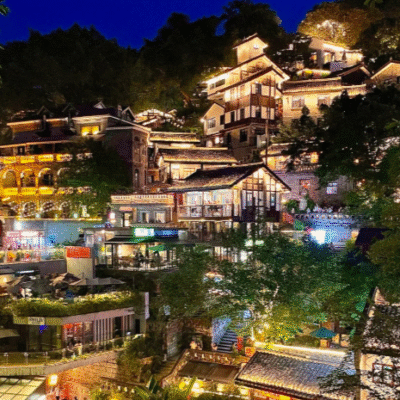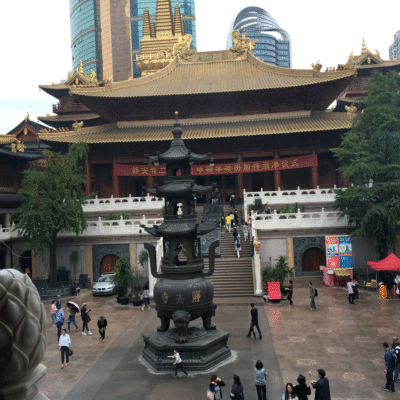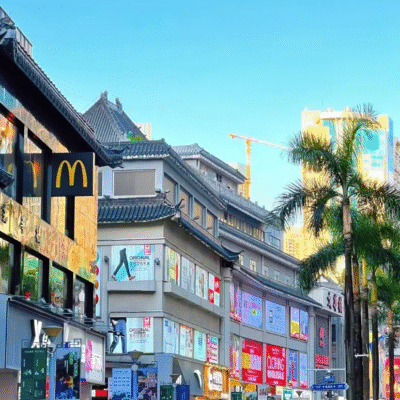Overview
The Temple of Heaven, located in southeastern Beijing, is an imperial complex where emperors of the Ming and Qing dynasties performed annual ceremonies to worship Heaven and pray for good harvests. It is a UNESCO World Heritage Site and a masterpiece of Chinese architecture and cosmology.

Visiting Tips
Recommended Duration: 1.5 to 2 hours
To fully appreciate the Temple of Heaven’s majestic architecture, serene park grounds, and cultural atmosphere, plan to spend around 1.5 to 2 hours. This allows enough time to explore the main structures such as the Hall of Prayer for Good Harvests, the Circular Mound Altar, and the Imperial Vault of Heaven, as well as to stroll through the surrounding gardens and watch local people practicing traditional exercises like tai chi.
Best Time for Photos: Early morning (7 AM – 9 AM) for soft lighting and fewer crowds
The early morning hours offer the most favorable lighting conditions for photography, with soft, warm sunlight that enhances the beauty of the intricate roofs and colorful details. Additionally, visiting between 7 and 9 AM helps you avoid the large crowds that gather later in the day, giving you a more peaceful and unobstructed experience. Early mornings are also when many locals come for morning exercises, adding lively cultural scenes to your photos.
Recommended Entrance: East Gate (closest to subway)
For convenience, use the East Gate entrance, which is nearest to the Tiantan East Gate subway station (Line 5). This entrance offers quick access to the main attractions inside the park and helps minimize walking distances. Entering here also allows you to avoid the busier South Gate, making your visit more comfortable and efficient, especially during peak tourist seasons.
Recommended Route
1. Enter via East Gate
The East Gate is the most convenient entrance, located near Tiantan East Gate Subway Station (Line 5). Entering here gives you quick access to the main attractions while avoiding the busiest crowds, allowing for a smooth start to your visit.
2. Hall of Prayer for Good Harvests
Upon entry, the magnificent Hall of Prayer for Good Harvests immediately captures attention. This triple-gabled circular wooden building is where emperors prayed for a good harvest. Take your time to admire the glazed tiles, intricate paintings, and detailed craftsmanship. It’s also the perfect spot for iconic photos.
3. Imperial Vault of Heaven & Echo Wall
Next, head to the Imperial Vault of Heaven, famous for its Echo Wall. Speak softly on one side of this circular wall, and your voice will carry clearly to the opposite side thanks to its acoustic design. This is a fascinating experience showcasing ancient Chinese architectural ingenuity.
4. Circular Mound Altar
Continue to the Circular Mound Altar, where emperors conducted heaven worship ceremonies. The altar is a three-tiered white marble platform with a perfectly round top symbolizing heaven. Standing at its center offers a solemn atmosphere and a unique vantage point for photos.
5. Danbi Bridge
Connecting the Hall of Prayer for Good Harvests and the Circular Mound Altar is the Danbi Bridge, a 360-meter-long marble walkway symbolizing the emperor’s path to heaven. Walking along the bridge, you can appreciate the grandeur of the surrounding architecture and the spiritual symbolism of the route.
6. Divine Music Administration
Before concluding, visit the Divine Music Administration, the place where music for imperial ceremonies was once performed. Today, it showcases traditional musical instruments and the rich history of ritual music in ancient China.
7. Fasting Palace
Lastly, explore the Fasting Palace (also known as the Purification Hall), where emperors fasted and purified themselves before ceremonies. The serene gardens and tranquil atmosphere here provide a peaceful end to your tour, reflecting the reverence of ancient rites.
Route Summary
Starting early in the morning is recommended to avoid crowds and to experience local residents practicing morning exercises in the park.
The entire route covers approximately 2 kilometers and takes about 1.5 hours at a comfortable walking pace, allowing for leisurely exploration and photography breaks.
This itinerary includes the most iconic and important sites within the Temple of Heaven, blending imperial ceremony grandeur with exquisite architecture and cultural insights.
Highlights
Hall of Prayer for Good Harvests
This magnificent triple-eaved wooden hall is an architectural marvel constructed entirely without nails, showcasing the ingenuity of ancient Chinese craftsmanship. It symbolizes heaven and served as the sacred place where emperors conducted annual prayers for bountiful harvests and good fortune. The hall’s soaring height and vibrant blue-tiled roof represent the connection between the earthly realm and the divine.
Imperial Vault of Heaven & Echo Wall
Adjacent to the iconic Echo Wall stands the Imperial Vault of Heaven, a smaller, domed building that once housed ceremonial instruments. The Echo Wall is famous for its extraordinary acoustic phenomenon: a whisper spoken at one point along the curved wall can be clearly heard at another point far away, demonstrating ancient architectural acoustics designed to symbolize communication between humans and heaven.
Circular Mound Altar
The Circular Mound Altar is a sacred, three-tiered white marble terrace crowned by the “Heavenly Heart Stone” at its center. It was the site where the emperor performed solemn ceremonies to worship Heaven, believed to be the precise spot where the emperor communicated directly with the celestial powers. The altar’s pure white color and perfect circular shape symbolize purity and eternity, making it one of the most photographed and spiritually significant spots in the Temple of Heaven complex.
Practical Information
- Location: Tiantan Road, Dongcheng District, Beijing
- Subway: Line 5, Temple of Heaven East Gate Station (Exit A)
- Opening Hours: Park 6:00–22:00; Attractions 8:00–17:30 (peak season)
- Admission: Park ticket ¥10; Combined ticket for main halls ¥34 (peak), ¥28 (off-season)
- Guides: WeChat mini-program, audio guide rentals, multilingual options available
Best Seasons to Visit
Spring (March to May) and autumn (September to October) offer mild temperatures and vibrant, lush scenery, making these seasons ideal for exploring the Temple of Heaven.
To avoid holiday crowds and the midday rush, plan your visit during early weekday mornings when the atmosphere is peaceful and local residents practice morning exercises. This timing ensures a more enjoyable and authentic experience.
Nearby Attractions & Food
Tianqiao Arts Center (10-minute walk)
Just a short 10-minute stroll from the Temple of Heaven, Tianqiao Arts Center hosts a variety of modern cultural performances, including traditional Chinese opera, acrobatics, and folk music. It’s a great place to experience Beijing’s vibrant performing arts scene after your temple visit.
Huguosi Snack Street
For an authentic taste of Beijing, head to nearby Huguosi Snack Street. This bustling food street offers a wide range of local snacks and street food specialties, perfect for sampling classic flavors like Jianbing (Chinese crepes), roasted chestnuts, and dumplings.
Temple Café
Located conveniently inside the Temple of Heaven park, the Temple Café is a comfortable spot to rest and refresh. Enjoy light refreshments and beverages as you recharge before continuing your exploration of the grounds.
Who Should Visit?
Ideal for photographers, history and culture enthusiasts, families with children, and seniors. Not recommended for rushed visitors or those seeking only quick photo stops.
Suggested One-Day Itinerary
Morning: Temple of Heaven
Afternoon: Qianmen Street → Beijing City Wall Ruins → Tiananmen Square or National Museum
Insider Tips
- Do not touch historic buildings or make loud noises
- For best photos at the Hall of Prayer, shoot in the morning light
- Bring your own water; drinks inside are costly
- If short on time, take the quick route: East Gate → Hall of Prayer → Echo Wall → Circular Mound Altar → South Gate exit






